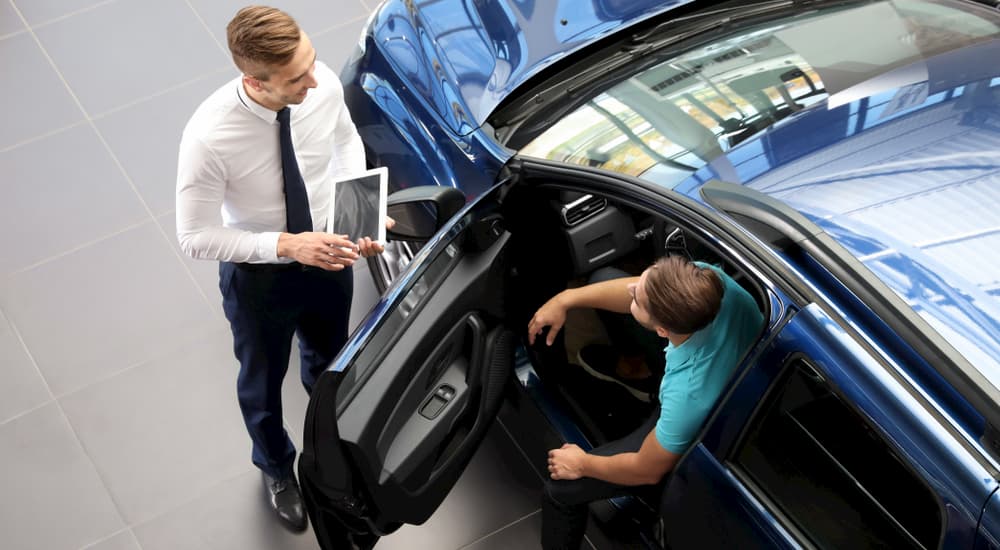If you’ve been watching the prices of used cars over the last 15 months or so, then I don’t have to tell you how crazy things are. But, on the other hand, if you just started shopping for a used model, then welcome to the party and get ready for the sticker shock: it’s intense. The prices on used cars are some of the highest they’ve ever been and, sadly, they’re not going down dramatically any time soon. Eventually, things will get better, but that’s little consolation if you need a vehicle in the next few weeks.
In general, the overall rule remains what it’s always been: the older the vehicle and the more miles on it, the less expensive it will be. The problem, however, is that “less expensive” doesn’t mean what it did before, and you can easily pay more for a used vehicle than what you might spend on something new. Sure, the new model of a similar or lower price might not have all of the features of a used option for the exact cost, but it also won’t have the wear and tear on it. So what do you need to shop for to pay less for used rather than new? Let’s take a look.
How Did We Get Here? (Briefly)
I’ll try to keep this short because it can get complicated, but the situation we’re in is due to COVID. When the pandemic hit and things started shutting down, car manufacturers reduced their orders for components like microchips needed to make vehicles. Then, in the second half of 2020, people began buying more cars, and manufacturers desperately needed more chips, which caused a shortage as demand surpassed supply. As a result, car companies haven’t been able to make as many new vehicles as they usually would.
With fewer new models available, people turned to the next-best thing: used vehicles. This resulted in a surge of demand for used vehicles beyond anything people expected. Car dealerships struggled to maintain a decent selection of pre-owned models, and prices on used vehicles skyrocketed due to lack of supply, increased demand, and boosted value for used models offered as trade-ins or sold to dealerships. So how bad has it gotten? Well…

What Does the Used Car Market Look Like?
In a word: bad. In more words: the median price for a used vehicle has gone up from $17,500 in December 2019 to over $25,000 in December 2021; that’s a 44% increase in just two years. Yes, it’s insane, and shoppers looking for used models, especially older vehicles at an excellent price, feel the worst of it. Plus, it’s well out of balance compared to new models; in December 2019, the median price of a used vehicle was about 49% of a new model; last December, the price was 65% of what a new model costs!
The situation isn’t just affecting late-year vehicles in fantastic condition either; it’s across the board and impacting anyone shopping for a used car. For example, it’s 2019, and you are looking at a three-year-old model from 2016 that will cost you around $21,000. Shopping for a three-year-old model in December 2021, making it a 2018 model, means paying a median price of over $34,000, a jump of about 48%. For older models, it gets proportionately worse.
In 2019, shopping for a five-year-old model from 2014 meant looking at a median price of about $15,000. In December 2021, the median price for a 2016 model hovered at $24,000, an increase of 53%. Looking at 10-year old vehicles using the same metric: in December 2019, the median price was around $8,000, which skyrocketed to over $15,000 in December 2021, or nearly double the price. Yes, vehicles cost more in 2018 than in 2016, but not to such a degree that it comes close to explaining such a drastic difference in used vehicle prices.
Which Models Are the Most Expensive?
Unfortunately, the vehicles hit hardest by this are cars like your basic, reliable sedan. For one thing, many domestic manufacturers have pretty much abandoned the sedan; where it was once the foundation of their lineups, crossovers have taken that spot. In addition to that, as chips became scarce, manufacturers kept popular, highly in-demand models like the Ford F-150 and popular SUVs in production. Something like the Chevy Malibu was less of a priority, so it became harder to find as a new model.
At the same time, what would most people look for if they’re trying to save as much money as possible while prices on used models rise? A sedan. As demand increases, so does price, and that’s how you end up with something like the median price of a three-year-old Toyota Camry going up by 59% from the end of 2019 to the end of 2021, while a three-year-old F-150’s median price increased by only 37%. Across the board, sedans and hatchbacks saw the steepest price increase. SUVs and crossovers generally went up less, and some truck models saw the lowest increase; though, don’t get me wrong, everything became more expensive.

What to Look For to Save Money
The age of the vehicle you’re looking at and its mileage are still the best ways to save money on a used car. As we saw above, a vehicle that’s 10 years old will have a lower median price than one that’s five or three years old. The issue is that the cost of that 10-year old car will be much higher than it was two years ago, but there’s nothing you can do about that.
From what I can see, five-year-old vehicles seem to be the sweet spot for finding a decent used model that isn’t more expensive than a new model. But even that’s going to depend on what you’re looking for. The median price of a five-year-old model in December 2021 was $24,000, which is $600 less than the starting MSRP of a brand-new Chevy Malibu. Of course, a five-year-old Malibu probably won’t be priced at $24,000, but you never know.
The features, options, and trim will also significantly impact the price. With microchips in short supply, many manufacturers have had to skip tech options and similar features that are upgrades for higher trims; they don’t have the components to offer them. If you have your heart set on heated seats, you might find the feature isn’t available on a new model, forcing you to look for a late-model with the amenity on the used lot. Higher trims have always cost more; the difference now is more extreme.
Any Relief in Sight?
Fortunately, there is some hope on the horizon, but the horizon is a ways off. The microchip shortage is expected to last throughout much of this year and will reportedly only begin returning to normal in the first half of next year. As things get better for new vehicles, demand for used models will subside, and prices will go down, but it will likely be a relatively slow process and not as fast as the price increase. If you can wait, all things being equal, 2024 seems to be the year a lot of experts feel we could be back to a better used-car market that’s more buyer-friendly. Yeah, that’s not great, but it’s at least some hope for relief.



